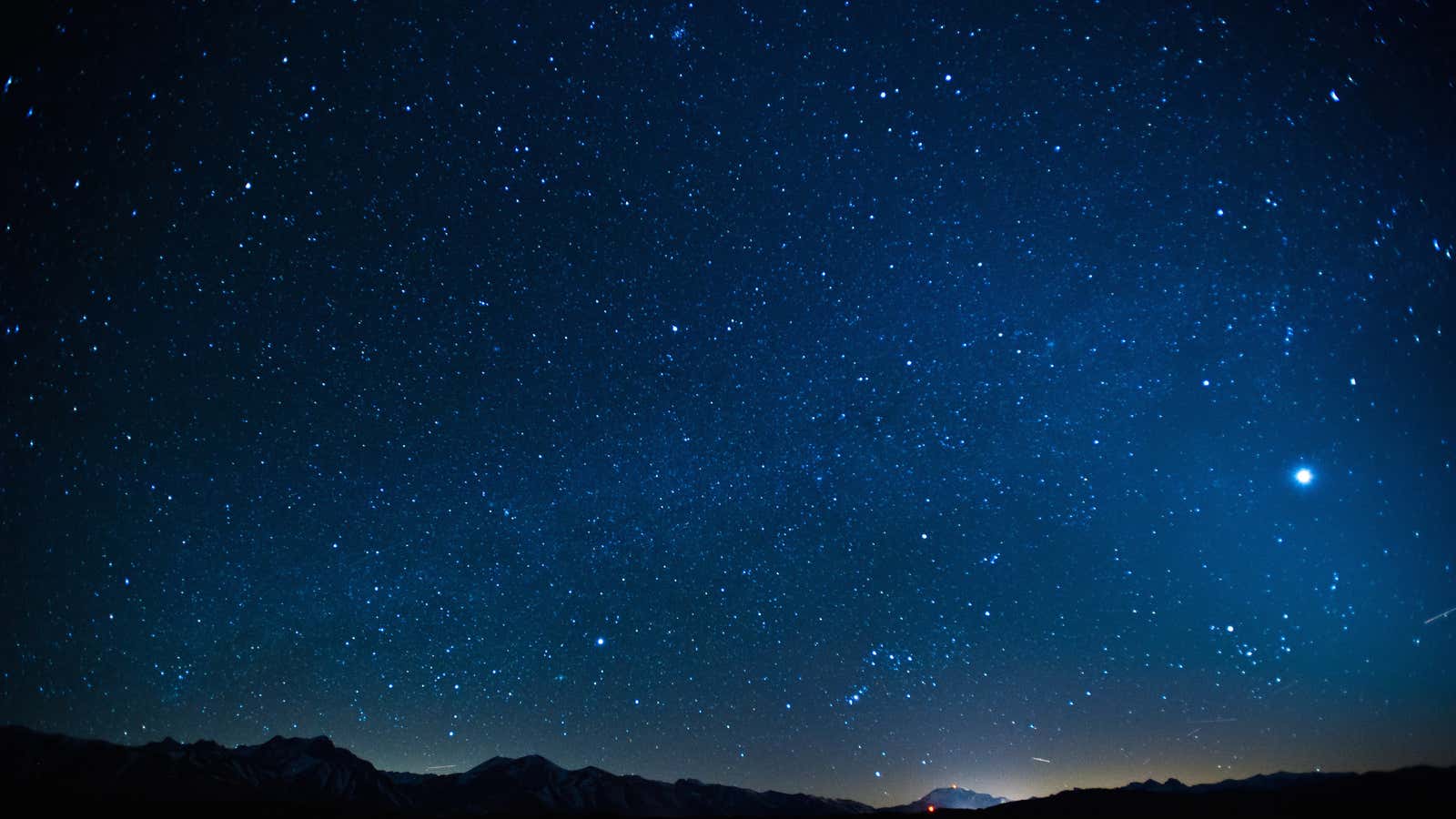For the past decade and a half, astrophysicists have had a problem: there aren’t enough stars in the universe.
Relatively speaking, there are a lot of stars. Around 100 sextillion—1 followed by 23 zeros—to be precise. But even this (truly) astronomical number isn’t large enough to satisfy these greedy scientists. That’s because models of star formation predict that there should actually be two or three times as many. So where in the universe did all the stars go?
Finally, astrophysicists have an answer. In a paper published in Nature, researchers write that they have identified an effect that takes place in some “starburst galaxies,” which form stars at a much higher rate than typical galaxies such as our own, the Milky Way.
In starburst galaxies, pressure from the radiation of the rapidly forming stars can drive gas out towards the edges of the galaxy. In other words, these galaxies scatter the necessary ingredients for making stars. The scattered gas means there’s less concentrated gas to glom into a star, which would explain why there are fewer stars in the universe than the models predict.
Photo via John Lemieux and was cropped.
